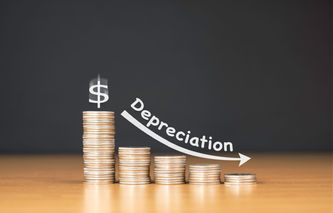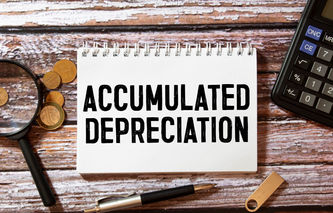Definition
The finance term Modified Accelerated Cost Recovery System, or MACRS, refers to the tax depreciation structure created as a result of the Tax Reform Act of 1986. MACRS is an accelerated approach to the depreciation of an asset, and is based on both the declining balance and straight line methods.
Explanation
The Modified Accelerated Cost Recovery System was first introduced in 1986, and replaced the even more business-friendly ACRS. Under the MACRS, the tax deductions for capital assets, or depreciation expense, occurs at a faster rate than book depreciation of the asset. In doing so, this system provides an incentive for businesses to purchase capital assets.
The exact method of tax depreciation is based on tables published by the IRS. In practice, there are a series of tables that include first-quarter, mid-quarter, third-quarter, and half-year conventions. The exact table to use will depend on the in-service date of the capital equipment.
The time over which depreciation occurs is based on classes of property, as demonstrated in the table below:
Class | Examples |
3-Year Property | Special equipment used in the manufacture of food, beverages, plastics, metal products and motor vehicles. |
5-Year Property | Computer systems, aircraft, drilling equipment, solar, wind and energy property. |
7-Year Property | Office furniture, fixtures, and equipment. |
10-Year Property | Petroleum refining equipment, ships and other transportation vessels. |
15-Year Property | Utility plant such as telephone distribution and municipal sewage treatment facilities. |
20-Year Property | Municipal sewer systems. |
27.5-Year Property | Residential rental property. |
39-Year Property | Non-residential real property. |
Once the asset's property class has been identified, a second table is used which contains the MACRS depreciation schedule as shown below:
Property Class | 3-Year | 5-Year | 7-Year | 10-Year | 15-Year | 20-Year | 39-Year |
1 | 33.333% | 20.000% | 14.290% | 10.000% | 5.000% | 3.750% | 2.564% |
2 | 33.333% | 32.000% | 24.490% | 18.000% | 9.500% | 7.219% | 2.564% |
3 | 33.334% | 19.200% | 17.490% | 14.400% | 8.550% | 6.677% | 2.564% |
4 | 11.520% | 12.490% | 11.520% | 7.700% | 6.177% | 2.564% | |
5 | 11.520% | 8.930% | 9.220% | 6.930% | 5.713% | 2.564% | |
6 | 5.760% | 8.920% | 7.370% | 6.230% | 5.285% | 2.564% | |
7 | 8.930% | 6.550% | 5.900% | 4.888% | 2.564% | ||
8 | 4.460% | 6.550% | 5.900% | 4.522% | 2.564% | ||
9 | 6.560% | 5.910% | 4.462% | 2.564% | |||
10 | 6.550% | 5.900% | 4.461% | 2.564% | |||
11 | 3.280% | 5.910% | 4.462% | 2.564% | |||
12 | 5.900% | 4.461% | 2.564% | ||||
13 | 5.910% | 4.462% | 2.564% | ||||
14 | 5.900% | 4.461% | 2.564% | ||||
15 | 5.910% | 4.462% | 2.564% | ||||
16 | 2.950% | 4.461% | 2.564% | ||||
17 | 4.462% | 2.564% | |||||
18 | 4.461% | 2.564% | |||||
19 | 4.462% | 2.564% | |||||
20 | 4.461% | 2.564% | |||||
21 | 2.231% | 2.564% | |||||
22 | 2.564% | ||||||
23 | 2.564% | ||||||
24 | 2.564% | ||||||
25 | 2.564% | ||||||
26 | 2.564% | ||||||
27 | 2.564% | ||||||
28 | 2.564% | ||||||
29 | 2.564% | ||||||
30 | 2.564% | ||||||
31 | 2.564% | ||||||
32 | 2.564% | ||||||
33 | 2.564% | ||||||
34 | 2.564% | ||||||
35 | 2.564% | ||||||
36 | 2.564% | ||||||
37 | 2.564% | ||||||
38 | 2.564% | ||||||
39 | 2.564% |
Example
Company A purchased a new computer system to automate the tracking of its inventory. The computer system cost $100,000, and based on the MACRS tables, the new asset would be considered 5-year property. As such, the tax depreciation schedule for the new computer system is shown below.
5-Year | Tax Depreciation | Accumulated Depreciation |
20.00% | $100,000 | $100,000 |
32.00% | $160,000 | $260,000 |
19.20% | $96,000 | $356,000 |
11.52% | $57,600 | $413,600 |
11.52% | $57,600 | $471,200 |
5.76% | $28,800 | $500,000 |




